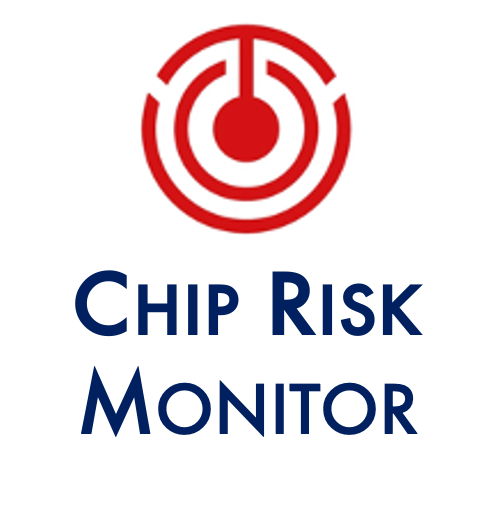Monthly Note - December 2023
The revamped October 7 semiconductor-focused export restrictions have had a couple months to fester – and will soon be over their Federal Register comment period. The new and improved measures aim to tighten US control over cutting-edge features of the semiconductor supply chain by adjusting chip thresholds covered by the restrictions, expanding the scope of semiconductor manufacturing equipment restrictions, and adding 13 Chinese companies to the entity list.
Needless to say, gaps remain. Those gaps include tactical failures: For example, semiconductor manufacturing equipment can still transit along known transshipment routes to China under exceptions for US persons and entities operating in third party countries (third party countries that in turn have lax export restriction protocols).
More problematic, though, are the failures of the strategic logic guiding these export restrictions. China is playing a different game. The maturation of Beijing’s military-civil fusion strategy and the infrastructure that executes the technology acquisition that is part of that strategy mean that even seemingly commercial chip use cases, like automotive applications, carry risk of supporting the PLA’s modernization effort. And even under the latest tightening of the October 7 restrictions, many, even most, military-civil fusion use cases may well continue to flow freely to Chinese actors with a “presumption of approval.”
Moreover, US export restrictions, including those that target equipment, are fixed on solving for only the cutting edge in artificial intelligence applications, and along well prescribed size and performance metrics (as measured). The Nvidia and Intel business models are well prepared to gear their product line tweaks accordingly to retain access to the Chinese market; to play the game. And Beijing is well prepared to continue apace in extending its dominance of all the other non-cutting edge and/or non-artificial intelligence nodes of the integrated circuit value chain – an effort that in turn guarantees supply chain leverage and the commercial returns of increasing market share for Chinese champions, with those, ultimately, influence over and access to the cutting-edge actors.
Spotlight
China’s semiconductor champions grow and maintain their market advantage according to a latticed system of preferential policies backed by the Chinese State’s industrial policy. Those supporting mechanisms are more than rhetoric or empty government labeled strategy documents. They are brought to life in the places and through the channels of funds that flow from China’s “State led, Enterprise driven” model for economic warfare.
In the semiconductor value chain, no single place represents the confluence of policy coordination and action quite as well as the Wuhan Optics Valley. As just a few examples of the critical role of this industry zone: It has been an instrumental part of the origin story for YMTC and stands out as a key research and production hub for Huawei. Those players, and their roles in China’s semiconductor strategy, are becoming better known outside China. But virtually no English language discussion of Wuhan Optics Valley exists – despite the virtually never-ending fountain of content generated on China’s indigenization efforts.
So, what is the Wuhan Optics Valley and why does it matter?
Wuhan Optics Valley – also known as the Wuhan East Lake High-Tech Development Zone or China Optics Valley or simply Optics Valley – was first settled in 1988. It is one of the first national-level high-tech zones in China and the second of China’s national independent innovation demonstration zones. Its technical focus has long been on optoelectronics, which today has evolved into a varied set of information technology pursuits spanning integrated circuits to fiber optics to bio-economy. The zone has become a hub of both research – with over 40 academic institutes represented – and industrial commercialization. It is touted as “one of the three most intellectually dense areas of China.” And this hub matters not simply because of its concentration of semiconductor relevant research, but also for its ultimate ambitions.
The Optics Valley mandate is “to support the cultivation of future industries such as quantum technology, brain science, and blockchain in order to seize the commanding heights of future industries.” That mandate matters for assessing the US-China technology balance and for enforcing export restriction efforts: Optics Valley leadership sees their efforts as linked directly to the goal to “strengthen independent controllability of the industrial chain and supply chain” relevant to digital industries such as 5G, artificial intelligence, and the Internet of Things.
What’s Next
The Chip Risk Monitor’s newest profiles cover Shenzhen AVIC Military Semiconductor Co., Ltd and Shanghai Microelectronics. The month ahead will bring refreshed looks across the set of monitored Chinese semiconductor champions and deep dives into their global business footprints and their ties to overseas markets.
Reading
Jane Lanhee Lee, Zheping Huang, Debby Wu, “Key Arm China Staff Quit to Create Government-Backed Startup,” Blomberg, October 11, 2023, https://www.bloomberg.com/news/articles/2023-10-12/senior-arm-china-staff-quit-to-create-government-backed-startup.
Paul McLeary and Joe Gould, “Pentagon: US arms industry struggling to keep up with China,” December 2, 2023, Politico, https://www.politico.com/news/2023/12/02/draft-pentagon-strategy-china-00129764.

